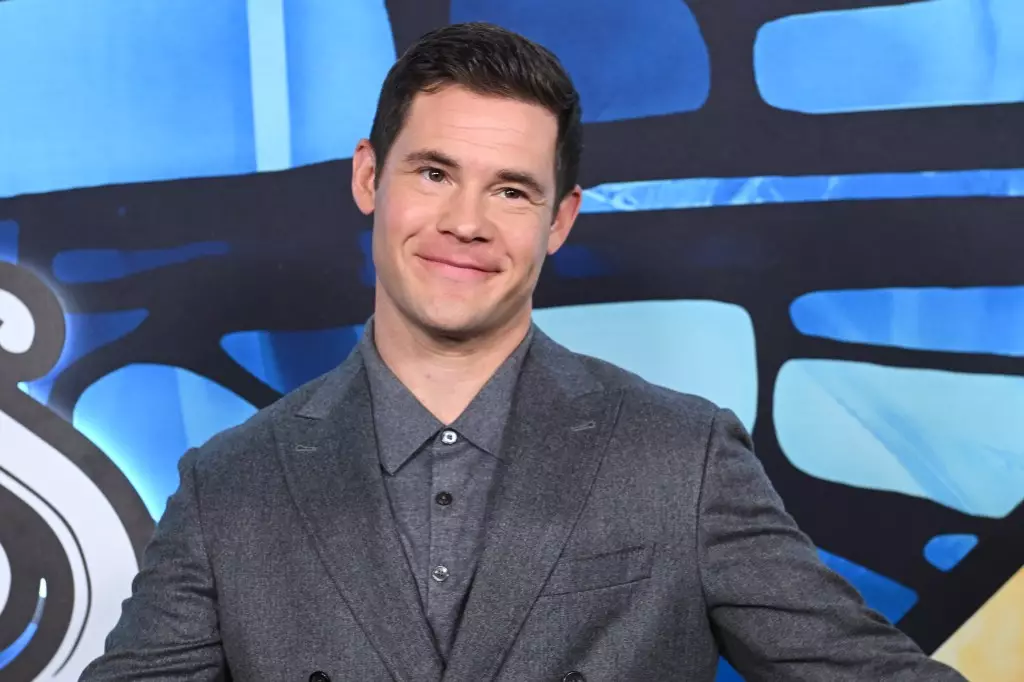Adam Devine, a familiar face from the hit series “Modern Family,” embodies not just comedic talent but also an extraordinary survival story. Behind his infectious humor lies a saga of chronic pain stemming from a tragic accident at the age of 11. While most children roam freely, choosing between candy bars and sugary treats, Devine was struck by a cement truck, an event that altered the trajectory of his life forever. This catastrophic incident didn’t just impact his childhood, but has continued to ripple through his adulthood, manifesting as relentless pain and a haunting sense of uncertainty about his health.
In a recent episode of the podcast “In Depth with Graham Bensinger,” Devine openly discussed the gravity of his ongoing health struggles. The musician-turned-actor revealing how a lifetime of discomfort has shaped his existence is a testament to the harsh realities many individuals face when grappling with chronic illness. However, what makes his narrative particularly compelling is his radical juxtaposition of vulnerability and resilience—as he navigates the complexities of life impacted by pain while maintaining a public persona that continues to engage and entertain.
The Medical Maze: Misdiagnosis and Rebirth
Devine’s journey through the medical system could be likened to a labyrinth, with twists and turns that have led him down paths of despair and hope. Initially confronted with a chilling diagnosis of stiff-person syndrome—a condition that, by nature, threatens both mobility and life itself—he faced an emotional avalanche. Those words, “They told me I was dying,” resonate with a weight that many can only imagine. The notion that your own body might turn against you paints a bleak picture, but what followed was a beacon of hope.
Upon seeking out a second opinion, Devine learned that the cause of his agony could be linked back to his childhood accident. In the world of medicine, where definitive answers often evade even the most seasoned practitioners, his story highlights an essential truth: the importance of second opinions cannot be overstated. The specialist’s reassessment shifted the prognosis from dire to manageable. This not only alleviated an immense burden but also offered Devine a new narrative—a tangible chance at healing.
From Despair to Optimism: Embracing Healing
What came next in Devine’s journey is a testament to human endurance—the pursuit of solutions, innovation, and ultimately, recovery. After undergoing stem cell treatment, he reports feeling the best he has in years, a significant feat considering the trials he endured. This pivot from despair to revitalization highlights an often-overlooked aspect of chronic illness: the possibility of recovery and the transformative power of modern medicine.
Moreover, it underscores the resilience of the human spirit. Adam Devine’s story is not just about the struggle against debilitating pain but an affirmation of perseverance. His ability to rise from the ashes of medical uncertainty serves as both inspiration and a rallying cry for those grappling with similar battles. In sharing his experiences, he not only normalizes the conversation surrounding chronic illnesses but also humanizes the often invisible struggles many endure silently.
In a world that often seems quick to dismiss the tales of pain, Adam Devine reminds us that with awareness, support, and advancements in treatment, hope is an enduring currency that can pave the way for recovery. His journey—part vulnerability, part triumph—is not merely a personal saga; it’s a powerful narrative that resonates with countless others, reminding us of the strength that lies within us all.
